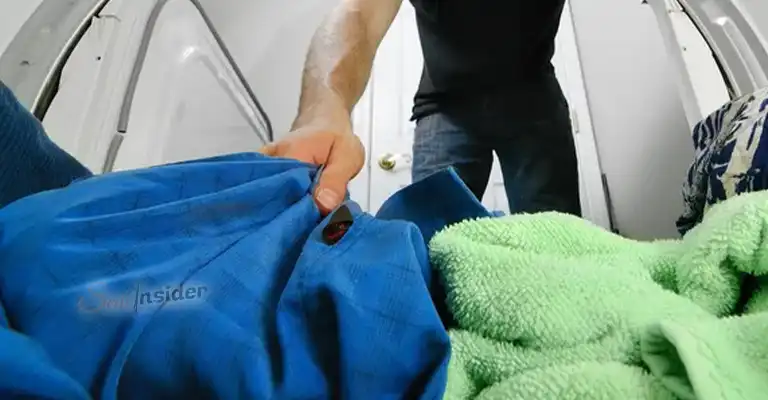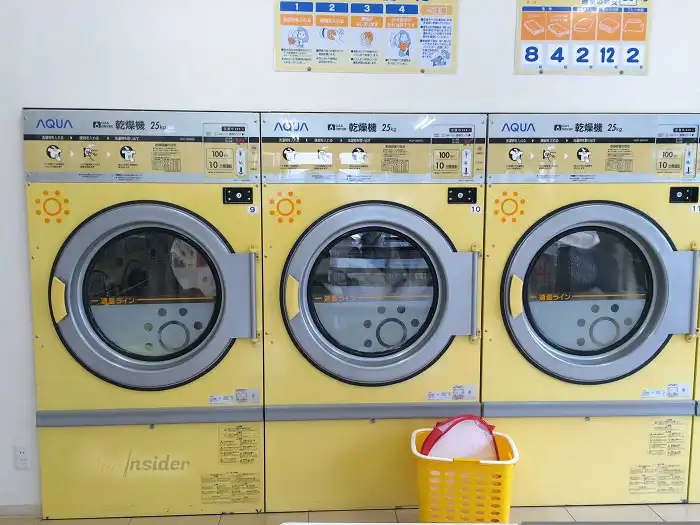The time it takes to dry a single shirt in a household dryer depends on fabric type, garment size, chosen settings, dryer efficiency, and initial moisture content. Lightweight fabrics dry faster, larger shirts take longer, and higher heat settings speed up drying. Newer, more efficient dryers work faster. A wrung-out shirt dries faster. Generally, it may take 30 minutes to an hour, but actual times vary.
Come with me to find out the duration to dry a shirt with a dryer.

What are the Factors of A Dryer Take Time For Drying A Shirt
Let us know about some factors that can affect a shirt to dry in various time durations.
1. Fabric Type And Size
First, let’s talk about the jeans. Jeans are thick and strong fabric made from denim. When they are kept in the dryer, they retain moisture like a sponge. Because it needs a bit more time to dry, between 40 and 60 minutes for the denim fabric to dry.
Now we come to woolen sweaters or any woolen clothes or shirts. The wool comes from sheep, and it helps keep us warm in winter. It takes 40 to 50 minutes for wool to dry. Cotton fabric that is easily breathable, light, and suitable for everyday wear. Made of cotton, this fabric allows air to pass easily, so it has the shortest drying time. It only takes 20 to 30 minutes. b
Lastly, polyester is made of very hard and artificial material. It takes 15-25 minutes to dry. Mind that drying time may vary on the size of the garment and how wet it is.
| Fabric of shirt | Denim | Wool | Cotton | Polyester |
| Duration (minutes) | 40-60 | 40-50 | 20-30 | 15-25 |
2. Dryer Settings
The Dryer heat setting is an important factor in drying clothes. Fabrics that are thick and do not easily damage tape can be dried on high heat settings. such as jeans. Low heat can be used to dry clothes that have high tape damage. Medium heat settings can be used for everyday clothes or clothes.

Additional Questions May Ask
a. Should I wring out a shirt before putting it in the dryer?
Absolutely! Giving a shirt a good squeeze to get rid of excess water can significantly cut down on drying time.
b. Is it possible to over-dry a shirt?
Oh, for sure! If you keep this in the dryer too long, it can cause it to wear out faster or even shrink (Dimensional stability). It’s a good idea to check on it during the cycle.
c. Can using lower heat settings save energy?
Yep, using lower heat does save energy, but keep in mind it might take a bit longer for your clothes to dry.
d. Why do some shirts take longer than others to dry, even if they’re made of the same fabric?
It’s like baking cookies – even if they’re made from the same dough, a bigger cookie needs more time in the oven. Similarly, bigger or wetter shirts take more time to dry.
e. How can I reduce the drying time for a shirt?
To speed things up, make sure the shirt isn’t too soaked, use higher heat (if it’s okay for the fabric), and consider using a more efficient dryer.
f. Are there any fabrics that should not be put in a dryer?
Absolutely, delicate fabrics like silk or certain laces are best left to air-dry. They’re a bit too sensitive for the dryer’s heat.
Conclusion
A household dryer takes into consideration the fabric type, size, dryer setting, efficiency, and how wet or initial moisture the fabric is when drying a shirt or any garment. From thick denim to breathable jerseys, every fabric deserves the utmost care. Efficiency and heat settings refine the process. This knowledge empowers us to dry clothes effectively and save time and energy. So, whether jeans or a wool sweater, maximizing dryer use ensures our favorite garments are promptly ready to wear.
Leave a Reply